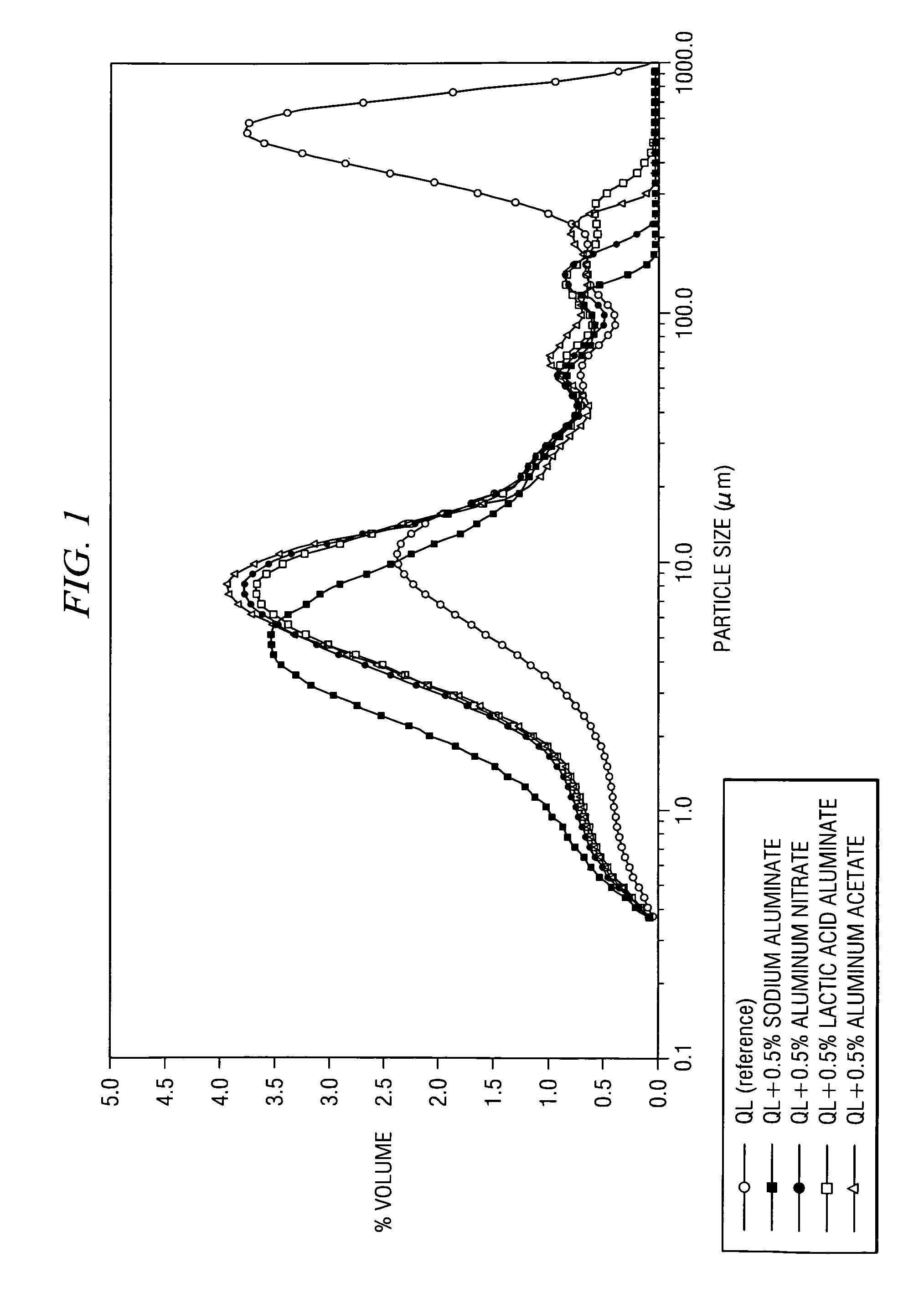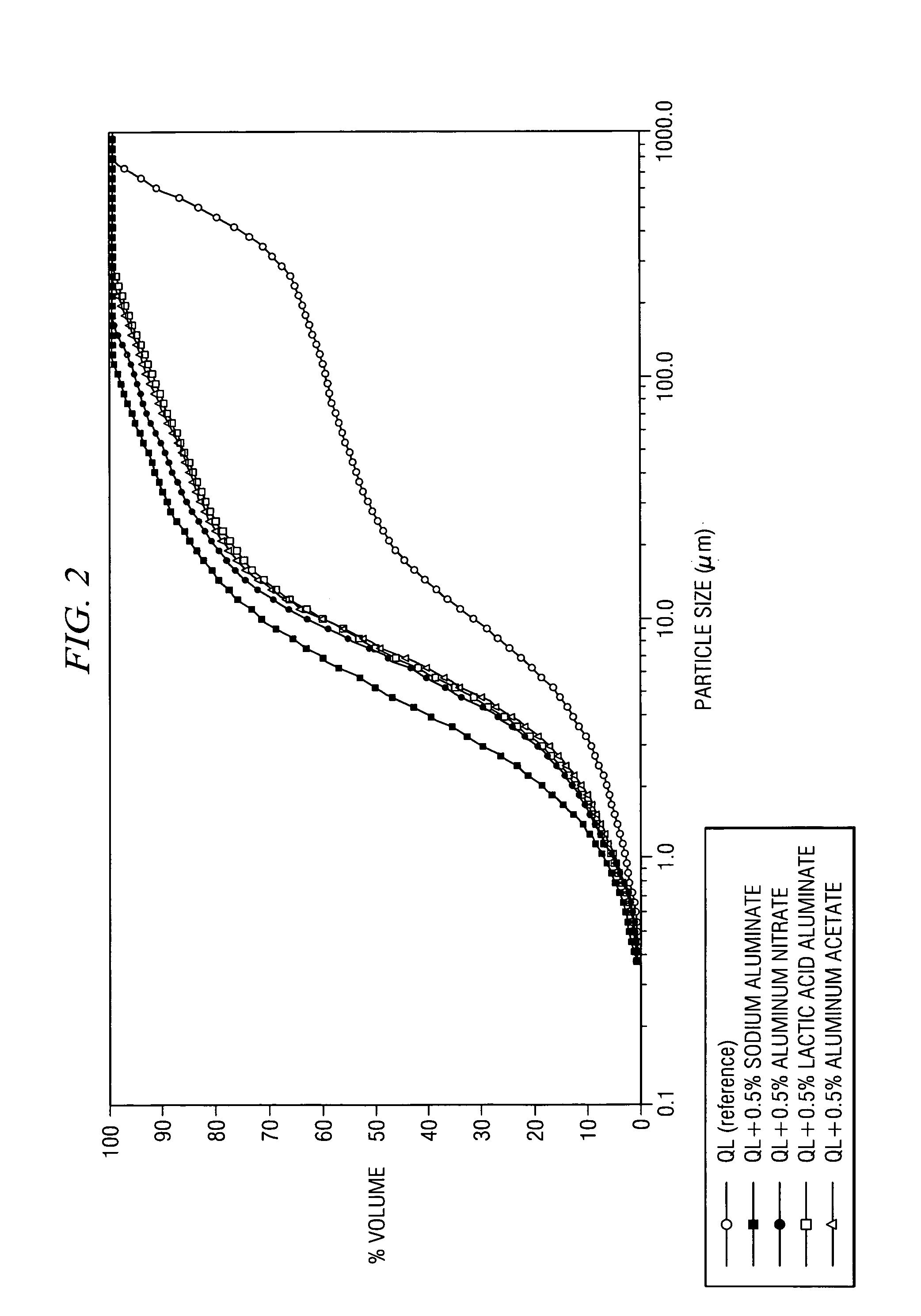Treatment of high sulfate containing quicklime
a high sulfate, quicklime technology, applied in the direction of magnesium compounds, oxygen/ozone/oxide/hydroxide, magnesia, etc., can solve the problems of unsatisfactory agglomeration of fine calcium hydroxide particles, commercial value of quicklime, and more limited market of quicklim
- Summary
- Abstract
- Description
- Claims
- Application Information
AI Technical Summary
Benefits of technology
Problems solved by technology
Method used
Image
Examples
Embodiment Construction
[0025]In the discussion which follows, the term “quicklime” will be taken to mean calcium oxide and should not be confused with limestone (calcium carbonate). As briefly outlined in Applicant's background discussion, quicklime is manufactured from limestone by heating to remove carbon dioxide. Quicklime can be converted to Ca(OH)2 by a slaking process where water and CaO are mixed under agitation to produce Ca(OH)2, known in the industry as slaked lime or lime hydrate.
[0026]In the typical prior art process for producing industrial grade hydrated lime, raw limestone is first fed to a calciner which is typically a horizontal or vertical kiln. The kiln is fired by burners which typically utilize pulverized coal as a fuel and are capable of reaching calcining temperatures in excess of 1600° F. The intense heat causes a chemical reaction as follows:
CaCO3+heat=CaO(quicklime)+CO2
[0027]The quicklime produced in the calciner is then slaked by mixing with an aqueous slaking medium in hydrato...
PUM
| Property | Measurement | Unit |
|---|---|---|
| temperatures | aaaaa | aaaaa |
| weight | aaaaa | aaaaa |
| weight | aaaaa | aaaaa |
Abstract
Description
Claims
Application Information
 Login to View More
Login to View More - R&D
- Intellectual Property
- Life Sciences
- Materials
- Tech Scout
- Unparalleled Data Quality
- Higher Quality Content
- 60% Fewer Hallucinations
Browse by: Latest US Patents, China's latest patents, Technical Efficacy Thesaurus, Application Domain, Technology Topic, Popular Technical Reports.
© 2025 PatSnap. All rights reserved.Legal|Privacy policy|Modern Slavery Act Transparency Statement|Sitemap|About US| Contact US: help@patsnap.com


